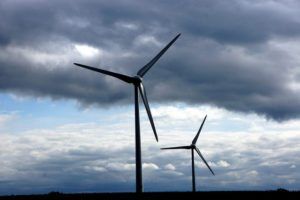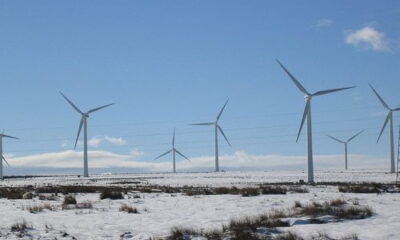

Energy
Catapult To Create Digital ‘Clone Of The Levenmouth Turbine’
First validated model of a large megawatt turbine will improve industry understanding and offer opportunities for UK
The Offshore Renewable Energy (ORE) Catapult is creating a digital ‘Clone of the Levenmouth Turbine’ (CLOWT), which will use sensor instrumentation to advance the industry’s understanding of how large megawatt turbines behave, and identify cost reduction opportunities through design optimisation.
The £450k project, with £215k funding support from the Scottish Government, will enable the Catapult to instrument its Levenmouth Offshore Wind Demonstration Turbine’s blades, tower and substructure, to monitor its behaviour in real-world conditions. It will then use the outputs to validate the current design methodologies and tools available for building large-scale offshore wind turbines, reducing design inefficiencies and flaws.
Validated design modelling will benefit the industry’s researchers and supply chain, as design optimisation and the ability to develop advanced simulations can support a significant number of leading Scottish engineering and manufacturing companies. It also offers opportunities to SMEs who can provide the sensors needed to instrument the turbine.
One of the first potential outputs from the project is expected to be the ‘Experimental Verification of Aeroelastic Models’ in collaboration with the University of Strathclyde, which will verify the accuracy of existing industry design tools, reducing the modelling uncertainty associated with these simulations.
Cian Conroy, ORE Catapult’s Sector Lead, Wind, said: “With the rapid scale in growth of offshore wind turbines, with 8MW machines now being readily deployed and the industry looking to develop 10MW turbines, industry needs to rethink and revalidate assumptions associated with offshore wind turbine designs.
“Deploying sensors on the Levenmouth turbine gives us a unique opportunity to understand the behaviour of a large turbine in real-world conditions, and benefit the industry, its supply chain and academia. Having a validated model is crucial for understanding the impact of design decisions in the weight and cost of different components of the turbine”.
The University of Strathclyde’s Professor Bill Leithead, Chair of Supergen Wind, said: “Instrumentation of the turbine has the potential to support a number of vital research projects for the offshore wind industry, and position the UK academic research community at the heart of European wind research. This project will enable unique research opportunities to explore the interactions between the turbine and its environment, and also the impact this has on elements such as the tower, foundations and blades, allowing turbine design to be streamlined and improved.”
This project will enable unique research opportunities to explore the interactions between the turbine and its environment.
Ben Wysome, Head of Department for Ramboll’s Offshore Wind team in the UK commented on the engineering consultancy’s involvement in this project: “Ramboll is in discussions with ORE Catapult on providing expertise on structural health monitoring gathered in latest offshore wind projects. We are convinced that monitoring offshore wind turbines, delivered in structured and standardised way, will make offshore structures safer, allow operators to optimise inspections, and provide reliable data on the remaining useful lifetime of foundations, all of which will contribute to further reducing the cost of energy from offshore wind.”


 Environment10 months ago
Environment10 months agoAre Polymer Banknotes: an Eco-Friendly Trend or a Groundswell?

 Environment11 months ago
Environment11 months agoEco-Friendly Home Improvements: Top 7 Upgrades for 2025

 Features9 months ago
Features9 months agoEco-Friendly Cryptocurrencies: Sustainable Investment Choices

 Features10 months ago
Features10 months agoEco-Friendly Crypto Traders Must Find the Right Exchange



























